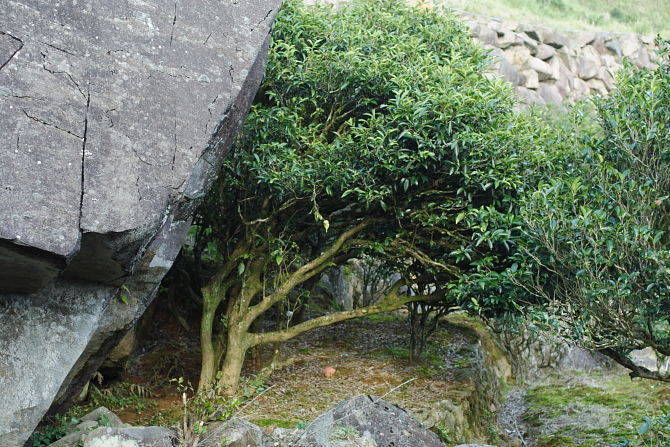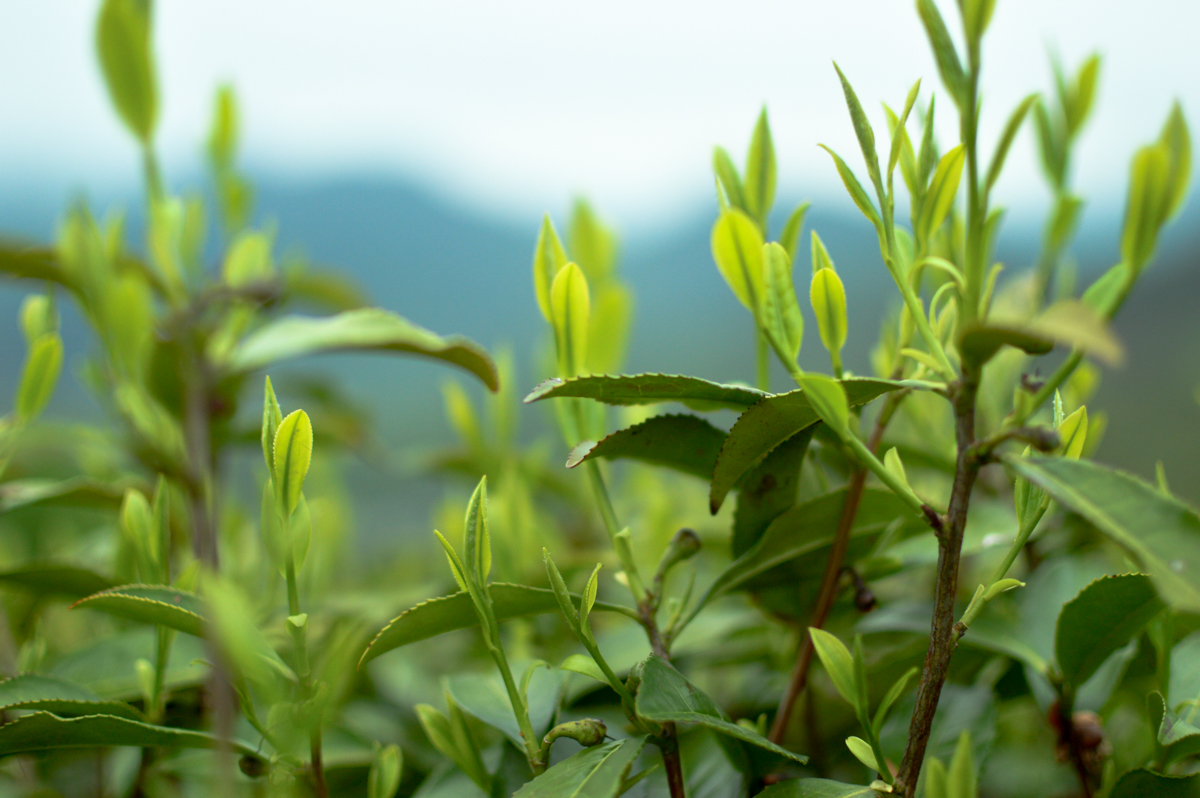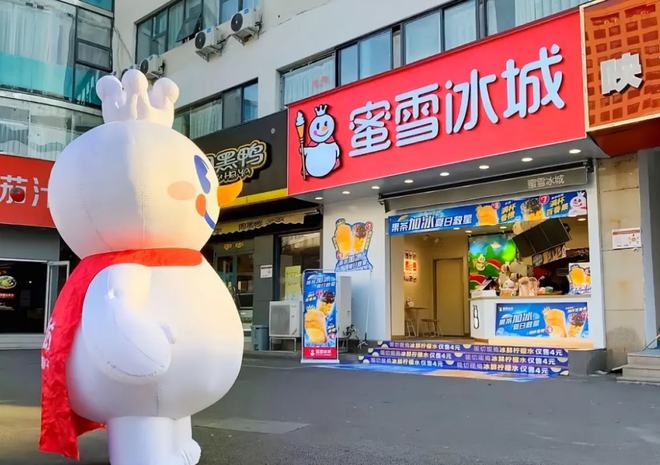Chinese Oolong Tea: what is the difference between Tieguanyin, Wuyi Rock Tea and Fenghuang Dancong?
What is Chinese oolong tea? Chinese oolong tea is a kind of semi-oxidized tea made from Camellia. To put it simply, oolong tea is between green tea and black tea. However, oolong tea is often made in more steps than green or black tea, sometimes more than 20 steps. It is the most widely used kind of tea, regardless of taste, color and shape. Interestingly, oolong tea is the only tea with no color in its name. White tea is usually light and may even look like a slightly colored water, such as high-quality silver needles, yellow tea is usually yellowish green and yellowish brown, and green tea ranges in color from yellow to green and black tea, which is dark red or dark orange in China. Fermented black tea can be very dark or light brown. Oolong tea can be oxidized more or less. This percentage can be around 10% (or less!) To more than 90%. Micro-oxidized oolong tea is often called "green oolong tea". Seriously oxidized oolong tea, often more than 95% is called oolong tea black tea, tastes very much like black tea. However, they are very rare. Some black teas are not completely oxidized and may even have green tea. Most dark oolong teas are oxidized by 80%. But what is more interesting is that the degree of oxidation is not the only factor affecting the color and flavor of oolong tea. Other processing methods, such as baking, baking or aging, can also significantly change the tea.
The origin of tea Chinese oolong tea has a long history of more than 1000 years, but the emergence of modern oolong tea is much later. The best oolong tea in China comes from two provinces-Fujian and Guangdong. Fujian is the hometown of the world-famous Anxi Guanyin oolong tea and the magical Wuyi rock tea, while Guangdong grows some of the world's most delicious and aromatic oolong tea-Dancong oolong tea.
Tieguanyin Tea Tieguanyin is a very popular and important oolong tea produced in Fujian Province. Its leaves are hemispherical and have a unique taste. Or, more accurately, taste. Di Guanyin tea has many different tastes. Traditionally, it is re-baked, but modern green varieties are also available. The re-baked Emperor Guanyin may have roasted and slight metal notes, with a deep and warm body. More modern tea can be more or less acidic, floral or creamy, similar to light green tea.

Wuyi rock tea Wuyi rock oolong tea grows on Wuyi Mountain in Fujian Province. It may grow at different elevations. Wuyi rock tea has twisted, usually medium-length, plump leaves. The most famous representative and one of the most expensive teas in the world is Dahongpao oolong tea. Other popular varieties are Qilan Oolong, Narcissus Oolong and Tirohan Oolong. Dancong Tea but Cong Tea comes from Guangdong. They are not only the most fragrant category of oolong tea, but also the most difficult to brew. But the cluster tea is made from the tea grown on the old tea tree in the Phoenix Mountain. Each of them has a very unique flavor, such as honey, almonds, orchids or sweet-scented osmanthus. But cluster tea is a really delicate kind of tea, and they should be brewed carefully. To experience the best taste, brew it in a small teapot, add a lot of tea, very hot water, and soak carefully. The oxidation of the taste of tea will affect the color, flavor and flavor. Green tea Oolong tea may have a taste very similar to light and nutty green tea. They are rarely plant, usually with cream, flowers or boiled vegetables. Baked and roasted oolong tea will have a stronger, either roasted and warm, or more intense baked or even metallic flavor. But the tea will smell good. You might even think they're artificially seasoned. But the real magic of oolong tea is that its taste changes with each brewing of tea. Although you can brew oolong tea with conventional Western-style brewing methods, it is best to re-soak the tea to enjoy each brewing taste. Oolong tea is rarely bitter unless you overbrew it. Always pay attention to the time of the first injection. If you burn the leaves when you soak for the first time, the later soaking will be bitter.
Important Notice :
前街咖啡 FrontStreet Coffee has moved to new addredd:
FrontStreet Coffee Address: 315,Donghua East Road,GuangZhou
Tel:020 38364473
- Prev

Introduction to tea: seven must-see documentaries on tea, the development story of tea and top tea masters
Learning about tea can be as exciting as drinking tea. If you are a visual learner, an interesting tea documentary will give you a new perspective on your favorite drink. Yes, for every tea lover, there is a perfect tea documentary-from discovering different tea cultures to caves.
- Next

What are the three major brands of Honey Snow Ice City? Michelle Bingcheng invests in Guangdong Huicha Tea Beverage Brand
Milk tea shop is no longer satisfied with dry milk tea, the uneasy status quo of tea like tea is out of bounds and invest in SEESAWCOFFEE. Nowadays, the appetite of Honey Snow Ice City is also growing, and it has been reported that Honeysnow Ice City has set up nine companies a year. The layout of Honey Snow Ice City has accelerated in the southwest and Hainan Province.
Related
- The milk tea cup becomes smaller?! Overlord Tea Girl launches a new "Return to Yunnan" series
- Accused of selling counterfeit and high-priced coffee beans! Well-known boutique coffee brand "Oukelao" bowed and apologized!
- How to make espresso dumplings? Can I eat coffee and glutinous rice balls together?
- Save the unformed and stagnant powder cakes in one second! What is the problem with stagnant water in the powder bowl of the espresso machine?
- What does hand-brewed coffee stop mean? Why is it not recommended to make coffee by hand?
- Is it normal to smell like coffee? Why does coffee smell like alcohol? What's wrong with the strong smell of cold extract ice dripping ice brewed coffee?
- How to solve the problem that hand-brewed coffee extraction takes too long? Why is the water flowing so slowly when making coffee?
- The main points of making Australian white coffee, the proportion details, how does Australian white properly foam and blend the flowers?
- Can ice water make cold extract coffee? What is the difference between room temperature water and ice water for making cold coffee?
- What milk is best for making latte and white Dirty coffee? What is the difference between different brands of fresh milk and pure milk for making coffee?

